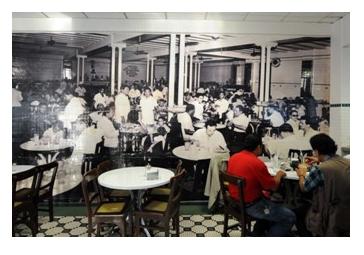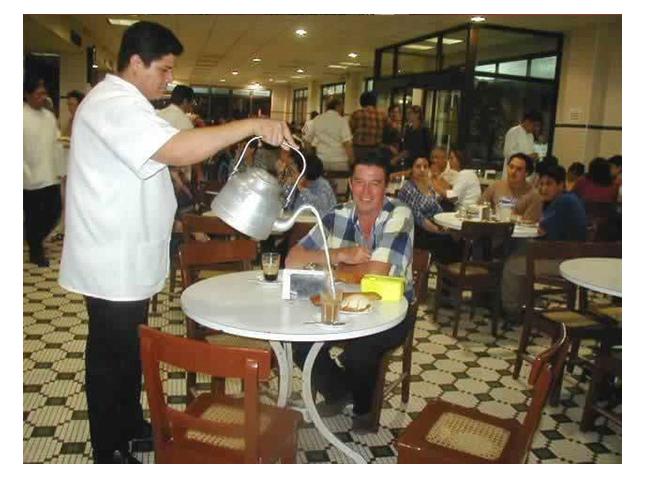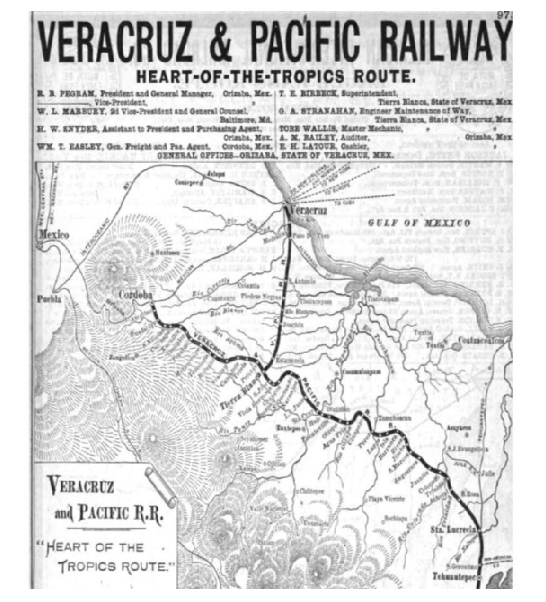January 2014 - Gran Cafe de la Parroquia
 |
|
Gran Cafe de la Parroquia, Veracruz, Mexico
Put on your guayabera, we’re going to Veracruz.In the late 1990’s your correspondent, freshly arrived from Mexico City, stood in downtown Veracruz discussing with a business partner where the next forty-five minutes should be spent. We were early for a meeting with Ferrosur, one of the newly privatized Mexican railroads. Ernesto, a Veracruz native, knew exactly where we should go. There was a nearby café, towards the malecon, or boardwalk, that was a must-see spot in Veracruz.

As we walked the few blocks toward the port, we started to wonder why we had worn suits for this meeting as the August heat and humidity were severe. “My guayabera is back in Atlanta; I should have brought it” I mused aloud. Ernesto laughed, “You’re right, my friend, a guayabera would have been the way to dress for this meeting!”
We arrived at a large and busy cafe. It was noisy with conversation and the clinking of glasses. “This is Veracruz’s most famous café; everybody comes here” Ernesto said. Based on the crowded and lively room I believed him. We sat down in caned chairs, and began to feel the relief of the air conditioning. Ernesto ordered two “cafes lechero”. I had never heard of a café “lechero”, but it is the specialty of the house. It is essentially a cafe con leche or, as the French would say, café au lait, espresso with steamed milk (no froth). The coffee came, black as night in the bottom of a glass. Then waiter proceeded to pour into the glass, from a large kettle with long spout, steamed milk, raising the kettle up high over the table in an elaborate manner, without spilling a drop. I knew we were in a spot with history.
 Veracruz, nestled in the curve of Mexico’s eastern coast, is Mexico’s oldest and one of its most important ports. It retains a colonial feel and, though it is not technically on the Caribbean Ocean, it is culturally similar, with its humid weather and its tropical informality. It is one of the oldest cities in North America, being close to where the Spaniards first landed in Mexico to begin their conquest. The Café de la Parroquia, where we were enjoying our coffee, is over two hundred years old.
Veracruz, nestled in the curve of Mexico’s eastern coast, is Mexico’s oldest and one of its most important ports. It retains a colonial feel and, though it is not technically on the Caribbean Ocean, it is culturally similar, with its humid weather and its tropical informality. It is one of the oldest cities in North America, being close to where the Spaniards first landed in Mexico to begin their conquest. The Café de la Parroquia, where we were enjoying our coffee, is over two hundred years old.
 In this old and spacious café you will be struck by two things. The first will be the noise, the tinkling of spoons on glasses as the customers indicate their desire for more coffee. This custom is said to come from years ago when the local trolley driver would ring his bell as he approached the café so that they would bring a coffee to him when he arrived at the nearby trolley stop. When the trolleyman died the trolley carried his casket past the café, and the patrons all clinked their glasses to mark his passing.
In this old and spacious café you will be struck by two things. The first will be the noise, the tinkling of spoons on glasses as the customers indicate their desire for more coffee. This custom is said to come from years ago when the local trolley driver would ring his bell as he approached the café so that they would bring a coffee to him when he arrived at the nearby trolley stop. When the trolleyman died the trolley carried his casket past the café, and the patrons all clinked their glasses to mark his passing.The second notable idiosyncrasy of the café will be the dramatic pouring of the steamed milk, as earlier described, into countless glasses of espresso. The café serves thousands each day, all day, to locals, passing businessmen, and tourists. What I did not realize as I enjoyed my coffee that morning is that it is almost certain that my great-great grandfather, Robert Baker Pegram, took coffee in the same café, in the early part of the 1900’s. He was president of the Veracruz and Pacific Railway, the “Heart of the Tropics Route”. Based in Orizaba, some distance inland, he would have passed through Veracruz on his way from his native United States. He likely had meetings in the same railroad offices I did, with officials from the Mexican Railway, the “Ruta de Veracruz”. History can be personal too.
Special
We still have a few Yoku Moku Petit Cinq Delices Holiday Tins left, and you still get free ground shipping on any order that includes one (Continental United States only). This offer will be good through January 31, 2014


